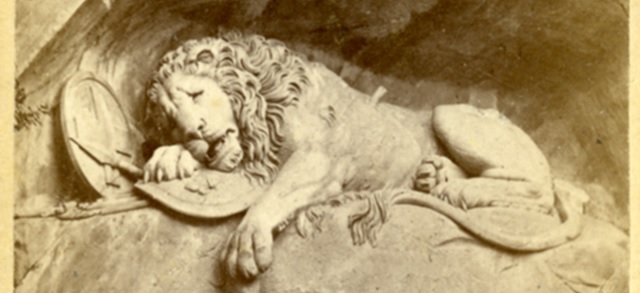
Monuments Class Projects
Architect/Sculptor of Monument
Robert Burn (1752-1815) Thomas Bonnar (1770-1847)
Preview

Medium
photograph, carte-de-viste
Keywords
Edinburgh, Nelson Monument, Calton Hill, Napoleonic Wars, Horatio Nelson, Battle of Trafalgar, Robert Burn, Time Ball
Physical Dimensions
4 x 2 1/2 "
Date of Publication
c. 1858-1890
Name of Monument
Nelson Monument
Date of Completion or Dedication of Monument
1816
City of Monument
Edinburgh
Location within City
Calton Hill
State/Province of Monument
Scotland
Country of Monument
United Kingdom
Description
The Nelson Monument on Calton Hill in Edinburgh was built in 1816 to commemorate Vice Admiral Horatio Nelson and his victory at the Battle of Trafalgar (1805). Designed by Robert Burn and finished by Thomas Bonnar, the monument resembles an upturned telescope, symbolizing Nelson’s naval legacy. In 1853, a time ball was added to the top, which drops daily at 1:00 PM, when the One O’Clock Gun is fired from Edinburgh Castle.
School of Art/Architecture
Gothic Revival Architecture
Publisher
unknown
Digital Date
4-22-2025
Copyright
Physical copy of the carte-de-viste is in the public domain, Digital copy scanned by Rod Library ©2025 Rod Library, University of Northern Iowa
Creative Commons License

This work is licensed under a Creative Commons Attribution-NonCommercial 4.0 International License
File Format
image/jpeg



Comments
The Nelson Monument in Edinburgh is a tower on Calton Hill, built to commemorate Vice Admiral Horatio Nelson (1758-1840) and his victory at the Battle of Trafalgar in 1805. The monument was completed in 1816 and is designed to resemble an upturned telescope, symbolizing Nelson’s role in naval history. The monument was funded by public subscription; and was originally designed by Alexander Nasmyth (1758-1840). It was simplified by the architect Robert Burn (1752-1815); he started building in 1807 but he ran out of money before it was completed. After Burn’s death, Thomas Bonnar (c. 1770-1847) took a year to complete the tower. The monument is primary a Gothic Revival tower with crenelation. It stands at 32 meters or 105 feet tall.
Nelson's victory at Trafalgar took place between the British, French, and Spanish navies on October 21, 1801 during the Napoleonic Wars. It helped establish British naval dominance for over 100 years. The battle was fought west of Cape Trafalgar, between Cadiz and the Strait of Gibraltar.
The monument’s placement on Calton Hill, allows it to serve as a symbolic beacon overlooking the city and the sea. In 1853, a large black ball was added to the top of the monument to serve as a time signal for ships in the port of Leith. This was the idea of Professor Charles Piazzi Smith (1819-1900), the Astronomer Royal in Scotland, who believed it would help ships to navigate at sea. The ball drops at exactly one o’clock daily as a signal to ships moored in the Firth of Forth, enabling captains to check the accuracy of their chronometers and correctly calculate their longitude at sea. The installation was carried out by James Ritchie & Son Clockmakers in 1853, and they are still employed by the City Council to maintain and operate the mechanism today. The ball is lowered as the One O’Clock Gun is fired from Edinburgh Castle each day. Today, the Nelson Monument is a popular tourist attraction offering panoramic views of Edinburgh. Visitors can climb to the top for a stunning view of the city and the Firth of Forth.